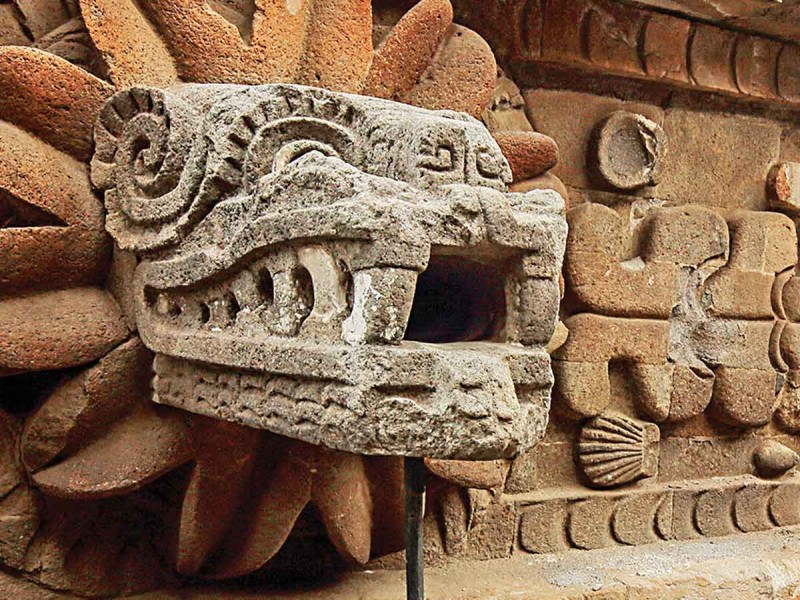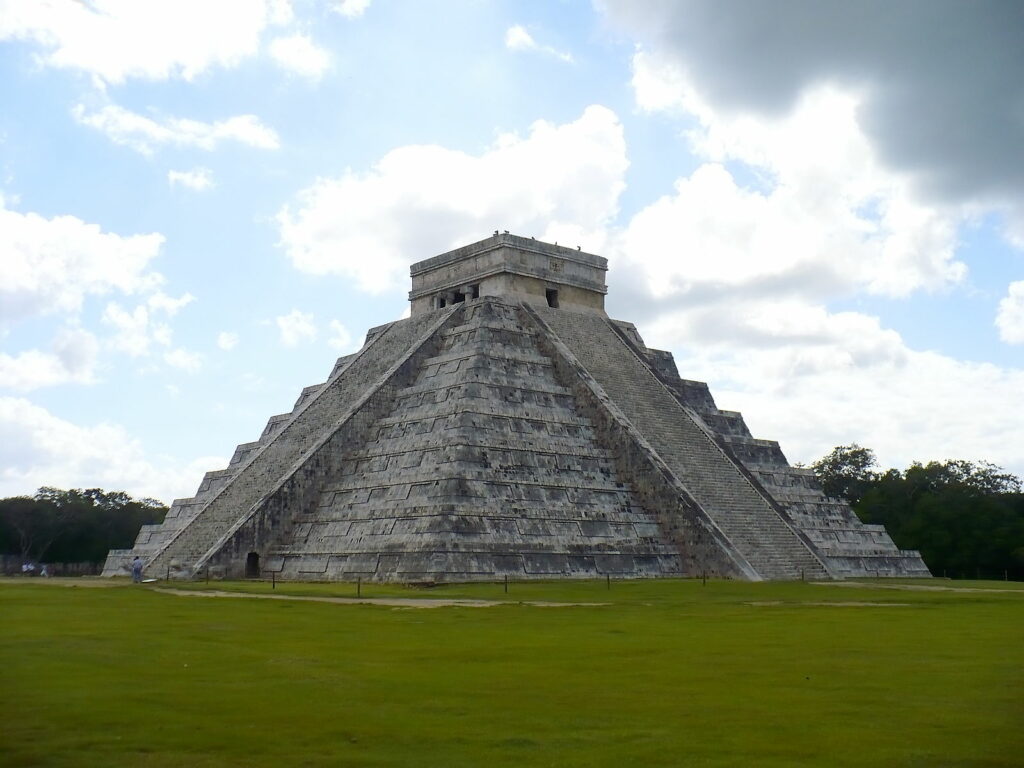In Black Panther: Wakanda Forever, M’Baku (played by Winston Duke) delivers a line about the film’s antagonist, Namor (played by Tenoch Huerta). It was delivered in such a way that it stuck with the crowds who saw the film
“They do not call him general, or king; they call him Kukulkan, the Feathered Serpent God.” Although Namor is a fictional character created by Marvel, the name Kukulkan is actually drawn from a real person and deity in Mesoamerica.

Mesoamerican Super God
The deity Kukulkan, or the feathered serpent god, is a key figure in Mayan mythology. However, he is also closely related to gods in other Mesoamerican cultures.
One example is Quetzalcóatl in the Toltec and Aztec cultures. Another is Gucumatz in the Quiché Maya culture of Guatemala. And lastly, Ehecatl in the Huastecs culture of the Gulf Coast.
In each form, he is tied to wind, rain, or life in general, and is related to the origin of the world. He first appears sometime in the first millennium BCE, as a drawing in Olmec paintings.
This was an ancient civilization predating the Aztecs and Maya in the Gulf region. But depictions of the Kukulkan are rare and little is known about his mythology during this period.
Where did Kukulkan come from?
Very little record of Kukulkan’s mythology exists. However, the origin of the name Kukulkan is a direct translation from the Yucatec language of the Mayans: “kuk.” This means feather, but the ending “ul” changes it to feathered. And “kan” means snake.
A common origin tale is that Kukulkan was a boy who was born as a feathered snake. He quickly grew to an unreasonable size. His sister took him to a cave to care for him until she could no longer feed him enough.
At this point, he flew out of the cave, causing an earthquake. Now it is said that every year in the summer Kukulkan causes an earthquake to let his sister know that he is still safe.
Who was Kulkulkan?
Records show he was the god of wind, rain, or life. He would fly around the world, sometimes ahead of the god Chaac who brought the rain.
Beyond this origin tale, not much else has persisted through history about Kukulkan. However, The Mayans have historical records of a man also called Kukulkan who was a great leader.
He lived in the 10th century CE. He supposedly founded the city of Chichen Itza. This would become the dominant city in the northern Yucatan region.
There is another example of cross-cultural connection in Toltec culture, which preceded the Aztec empire. Their culture shares a similar story of a man who shares a name with the deity Quetzalcóatl who went east and founded a city.
This demonstrates another example of the mingling and evolution of Mesoamerican cultures. Today, Chichen Itza stands as the city most associated with Kukulkan.
Architectural Achievements
Two important structures still stand in the city. One is called the Caracol. It is an astronomical observatory that was possibly designed to look like a conch, a shell associated with wind gods across the peninsula.
It likely was built to track the movements of the planet Venus, which was closely associated with Kukulkan in all his forms. The second important structure stands at the center of Chichen Itza.
The Pyramid of Kukulkan, built on the ruins of another site between 800 and 900 CE, is a massive monument to the deity. It is the central location for human sacrifices to appease the gods’ wrath.

A Monumental Calendar
The pyramid is an architectural feat in many ways. Of the four stairwells, three have 91 steps and one has 92, for a total of 365 steps representing the year. The walls are also divided into nine sections, bisected on each side by the stairways, to represent the 18-month Mayan calendar.
Finally, the view of the pyramid from the top is a square intersected with the lines of the staircases. It is reminiscent of the Mayan symbol for zero.
This made the pyramid not only a monument to the gods but also a looming calendar and a monument to Mayan innovation. But most impressively, the features of the building would recreate a mythological journey of Kukulkan twice a year.
Serpent Symbology
In Mesoamerican cultures, the snake symbolized life between gods and humanity, above and below earth. Just as a snake could crawl along the earth, it could also submerge itself in the ground. This is how Kukulkan navigated the physical and metaphysical world.
The Mayans designed the pyramid to represent his journey. On each equinox, when the balance between day and night was the most equal, the edges of the nine steps of the pyramid cast their shadows along the sides of the pyramid.
Over the course of a few hours, the shadows slowly creep down the sides, mimicking the movement of a snake slithering. Once the head of the feathered serpent at the base of the pyramid is connected to the topmost stone, the image remains for nearly an hour before the shadows begin creeping down out of sight.
This design represents Kukulkan’s biannual journey between the heavens and the underworld, where he stops to bless humanity as he passes through the earth.
The mythological narratives of Kukulkan are lost to time. All that is known is that he is the god of wind in the shape of a feathered serpent. This has not stopped pop culture from incorporating aspects of his mythology.
Namor, the Sub-Mariner from Marvel comics, has been adapted to be a representation of Kukulkan, acting in a similar role to the human figure of Kukulkan from Mayan history. Kukulkan also makes an appearance in Star Trek as an ancient serpent species that visited Earth.
He is also a playable character in the multiplayer online battle arena (MOBA) game Smite, whose characters are from assorted pantheons.
References
Cartwright, Mark. “Kukulkan.” World History Encyclopedia, January 25, 2021. https://www.worldhistory.org/Kukulcan/.
“Kukulkan.” Mythlok. https://mythlok.com/kukulkan/.
Tre. “Pyramid of Kukulcan at Chich’en Itza.” Atlas Obscura, July 15, 2009. https://www.atlasobscura.com/places/pyramid-kukulcan-chichen-itza.

